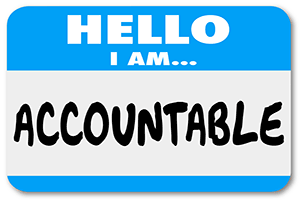When talented, high performing team members leave the organization, everyone from peers through leadership likely feels a sense of loss and disappointment. Often, once a resignation has been announced, everyone quickly assembles to identify and close whatever knowledge gaps will be created in the wake of the departure. This survival-mode mentality is understandable, yet short-sighted. That departing employee holds far more valuable information than just how they functioned in their role. They also hold the secret to how you can retain the rest of your staff.
Reverse Mentoring in a Multi-Generational Workforce
While there is a contentious debate among researchers, experts, and managers alike regarding the fundamental motivational drivers and values-based differences between generations, one conclusion is undeniable. With four (if not five) generations working together in organizations, the differences in experience, skills, and use of tech are striking. The oldest workers employed today are from the tail-end of the Silent Generation (born between 1925-1946). Having felt the immediate effects of the Great Depression and spending 50+ years in the workforce, they’ve seen a thing or two during their careers and they leverage those experiences to inform their decision-making. Next, the Baby … Read More
Strategies for Building Accountability
In a recent online poll, leaders reported that the number one change they’d like to see in their corporate culture is a stronger commitment to accountability. Accountability takes many different forms across organizations. In many cases, accountability is only referenced in the form of performance failures and mistakes. In this context, accountability is often characterized as being willing to “fall on your sword” and admit your part in where things went wrong. This is a short-sighted and negative interpretation of accountability that is unlikely to create a positive change in an organization’s culture. At its best, accountability is a personal … Read More
Are They Coachable?
“Is she coachable?” It’s the question every manager asks as they consider the future of an under-performing employee. If I give direct feedback, flex to her learning style, and offer new techniques, do I envision a pathway where this individual becomes an impactful part of the team? The question of coachability is too broad, though. Several key factors that contribute to coachability must be considered first. These include overall competency, self-awareness, openness to feedback, learning agility, motivation, time, resources, etc. Given unlimited attention, budget, and patience, perhaps most people are coachable. However, reality often places constraints that may limit the … Read More
Getting Unstuck
As one’s career ebbs and flows, it’s common to experience times of peak productivity and effectiveness as well as times of frustration and stagnation. When everything is working as it should, the highs are incredible and create natural energy to drive you forward. But when the tough days turn into rough weeks, months, or even a year, that job can start to feel a bit like quicksand. When the lows hit, the worst thing you can do is keep pushing ahead without making any changes. You can’t run out the clock using the same ineffective behaviors and choices you used … Read More
Leading While Walking and Talking
The research on sitting is clear. We’re slowly killing ourselves through inactivity every day. In addition to developing poor posture, sitting for long periods of time is linked to an increased risk of high blood pressure, heart disease, diabetes, and dementia—regardless of diet. In addition to the net negative impact on health, sitting also impacts productivity. Energy level drops, creativity is impacted, and brain fog emerges. While corporate wellness programs may encourage step count competitions and provide great education on overall wellness, leaders should take an active role in increasing physical activity in the office.






